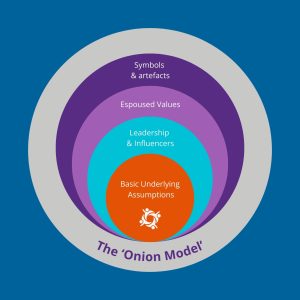Get in touch with us today!
If you have any questions, enquiries or just want to say how much you like us (or what we can do better), please drop us a line.
In today’s fast-paced workplace, change is no longer a rare event—it’s a constant. However, most of us are not equipped to manage change effectively, leaving both employees and organisations struggling to thrive. As someone deeply passionate about empowering people to lead positive transformation, I believe that becoming a “Change Superhero” is not only possible but essential in modern business.
In this post, we’ll explore some of the key principles from Do Change Better, a practical guide for leading, managing, and embracing change in a way that delivers real results—without leaving people behind. Whether you’re a seasoned leader or someone at the heart of the workforce, these strategies will help you navigate the complexities of change with confidence.
First and foremost, being a successful change agent requires courage. Too often, people are uncomfortable challenging the status quo—especially when resistance comes from senior leaders. But in change management, courage isn’t just about standing up to opposition. It’s about mastering your emotions and understanding how others may react to the change process.
This is where emotional intelligence (EI) comes in. Emotional intelligence helps us recognise our own emotional triggers while also enabling us to empathise with the concerns of others. According to Daniel Goleman, EI has five components: self-awareness, self-control, self-motivation, empathy, and social skills. A strong change agent must develop all five to succeed, especially when dealing with the human side of change.
For leaders, this means practising transformational leadership—inspiring trust, motivating teams, and being authentic. When people believe in you, they are more likely to embrace the changes you propose.
People are far more likely to embrace change when they understand how it fits into the bigger picture. As change agents, it’s critical to show how any new initiative aligns with the organisation’s strategy. If employees see that the change supports broader goals, such as improving customer experience or staying competitive in the market, they’re more likely to engage with the process.
One tool I often use is the Change Equation (from Beckhard and Harris). This formula shows that change will only happen if dissatisfaction with the current state, a clear vision of the future, and practical steps for getting there outweigh the perceived cost of the change. If employees don’t feel the vision is worth the effort, or if the change seems risky, they’ll resist. The role of the change agent is to tell a compelling story about why change is necessary and how it benefits both the organisation and its people.
You can also use a PESTLE analysis (Political, Economic, Social, Technological, Legal, Environmental) to explain external pressures driving the change. This helps people understand that change isn’t arbitrary—it’s often a necessary response to forces beyond the organisation’s control.
Influence is the backbone of change management, but too often we see organisations trying to coerce people into changing. This never works. Instead, we should focus on persuasion, using Robert Cialdini’s six principles of influence: authority, consensus, consistency, liking, reciprocity, and scarcity.
By mastering these principles, we can encourage people to choose to adapt rather than feel forced into it.
We’ve all heard the saying, “communication is key,” but in change management, it’s more than that—effective communication is critical. John Kotter, a leading expert on business change, suggests that most organisations vastly under-communicate during periods of transformation. His advice? Communicate the vision 10 times more than you think is necessary. But it’s not just about volume; it’s about how you communicate. Your tone, body language, and facial expressions need to align with your words to build trust.
It’s also essential to foster collaboration. Change agents cannot do it alone. They need to bring others along for the ride by building a “Change League” of champions. These are individuals across the organisation who share the vision and can influence others in their teams to get on board. Creating this collaborative network ensures that change efforts are sustainable and far-reaching.
One of the biggest challenges change agents face is resistance. Often, resistance stems from personality differences and the way people process change. Using tools like the Myers-Briggs Type Indicator (MBTI), we can better understand why some people resist change while others embrace it. For example, extroverts may voice concerns immediately, while introverts may need more time to process before they express their thoughts.
Similarly, individuals with a “sensing” preference will want detailed, practical information about the change, while those with an “intuition” preference are more likely to focus on the big picture. Tailoring your communication to these preferences helps meet people where they are.
The Transition Curve is also a valuable model for understanding the emotional journey people go through during change. It includes four stages—denial, resistance, exploration, and commitment. As change agents, we must guide people through these stages, helping them move from resistance to acceptance.
Organisational culture is one of the most significant barriers to change. As Edgar Schein’s Onion Model suggests, culture operates at multiple levels—from visible symbols like office design and branding to deeply embedded values and assumptions that are harder to see. Successful change agents understand that culture shifts require more than surface-level changes; they need to engage with the underlying values and leadership behaviours that drive the organisation.
are harder to see. Successful change agents understand that culture shifts require more than surface-level changes; they need to engage with the underlying values and leadership behaviours that drive the organisation.
To lead lasting change, we must align new initiatives with the company’s strategy and values, while also addressing any cultural resistance that may arise. Whether the organisation has a hierarchical culture focused on stability or an innovative culture geared toward disruption, understanding these dynamics helps ensure the change is embedded in the company’s DNA.
No change agent is an island. To successfully lead transformation, you need to build a Change League—a team of diverse individuals who can support the change at different stages. Drawing from Belbin’s Team Roles model, we see that high-performing teams have members with complementary strengths, such as shapers, coordinators, implementers, and team workers. Each role plays a vital part in ensuring that change moves forward, from the initial planning stages to execution and embedding.
Change can be intimidating, but it’s also an incredible opportunity to grow and evolve—both as individuals and as organisations. By developing courage, honing our emotional intelligence, and focusing on clear, strategic communication, we can lead change in a way that feels positive, inclusive, and effective.
Remember, successful change agents don’t just manage tasks—they inspire others, build trust, and create environments where everyone feels empowered to contribute. If you want to become a Change Superhero in your organisation, now is the time to start practicing these principles.
For more information on the above and how to pre-order 6-Minute Smarts please see our page here:
Book Launch – 6 Minute Smarts [Pre-order your copy]
We also have a variety of free resources available to you in our ‘Change Superhero Toolkit’ including our Superhero Quiz. Plus infographics on ‘Neuro-Linguistic Programming’, ‘Influencing Change’, and ‘MBTI People Reactions to Change’. As-well-as other materials on ‘Kotter’s Model Case Study PDF’ and ‘How to Handle Conflict (Thomas-Kilmann) PDF’.:

We also have a podcast called ‘The HR Uprising’ which has a variety of informative topics in business and HR. Please visit the HR Uprising website link below, or download wherever you get your podcasts from (YouTube, Spotify, Apple, Audible etc).
If you enjoyed this blog and would like to read more on this topic please see here.
And if you are thirsty for more please see below how our Software can help you…
The company has evolved over the past 12 years, starting with pure performance management. Then building out our own fully integrated talent, learning, compliance and feedback functionality. We also have API’s to link to payroll/HRIS systems. This means you can start with Actus as a software solution for your initial requirements. With full confidence that this can evolve over time to address future strategic requirements with fully integrated add on modules. With the same great customer service!
Why not take a quick look at the Actus system tour here:
Why not book a free demo with one of our expert team who will walk you through the Actus software:
Request Free Actus Software Demo
Please complete the details to receive a 3 minute system tour direct to your inbox!
If you are looking for performance management software for 1000+ employees get in touch for a quote today.
Talk to one of our partnership specialists today.
Fill in your details below and then please check your email for a link to the 3 minute overview of Actus Software
If you have any questions, enquiries or just want to say how much you like us (or what we can do better), please drop us a line.